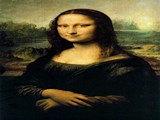 |
 |
Leonardo da Vinci, at the French Court
There is no need to introduce Leonardo da Vinci, Italian painter and great mind, an artist, scientist, engineer, inventor, anatomist, painter, sculptor, architect, urban planner, botanist, musician, poet, philosopher and writer.
In September 1515, Francis the 1st conquers Milan as the new king of France, with the battle of Marignan.
In November 1515, Leonardo begins the planning of the Médicis quarter in Florence.
Francis the 1st, fascinated by his talent, invites him to France.
|


